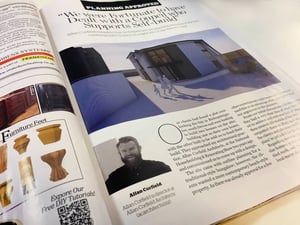“We were Fortunate to have Dealt with a Council who Supports Self-Build”
Allan Corfield explains how he helped secure planning approval for two contemporary homes on a tight site on the Devon coast.
Our clients had found a plot overlooking the bay in Bishopsteignton, South Devon and were looking to build two houses on the site; one as their own home, with the other sold to fund their build. They approached my architectural practice, Allan Corfield Architects, at the National Homebuilding & Renovating Show in Birmingham, two years ago and commissioned ACA to come up with a design.
The site came with outline planning for a traditional-style bungalow; however, the clients wanted a contemporary beach-style property. As there was already approval for a few other contemporary-style houses in the area, we used this as an advantage when putting forward our argument to the planners.
ALLAN’S COMMENT:
The site benefited from previous planning approval, but they did not match the clients’ desires or make the most of the plot. Buying a site with approval reduces the risk involved in the development significantly. However make sure that the previous owners (or developers in this case) have not caused issues with the neighbours or planning team, which could cause lots of problems for a new owner.
It is always prudent to hold pre-application discussions with the planning team to get some background and also to discuss what you propose to do with the site. Also, make sure that these discussions involve a written response, this can then be referenced in the final planning submission.
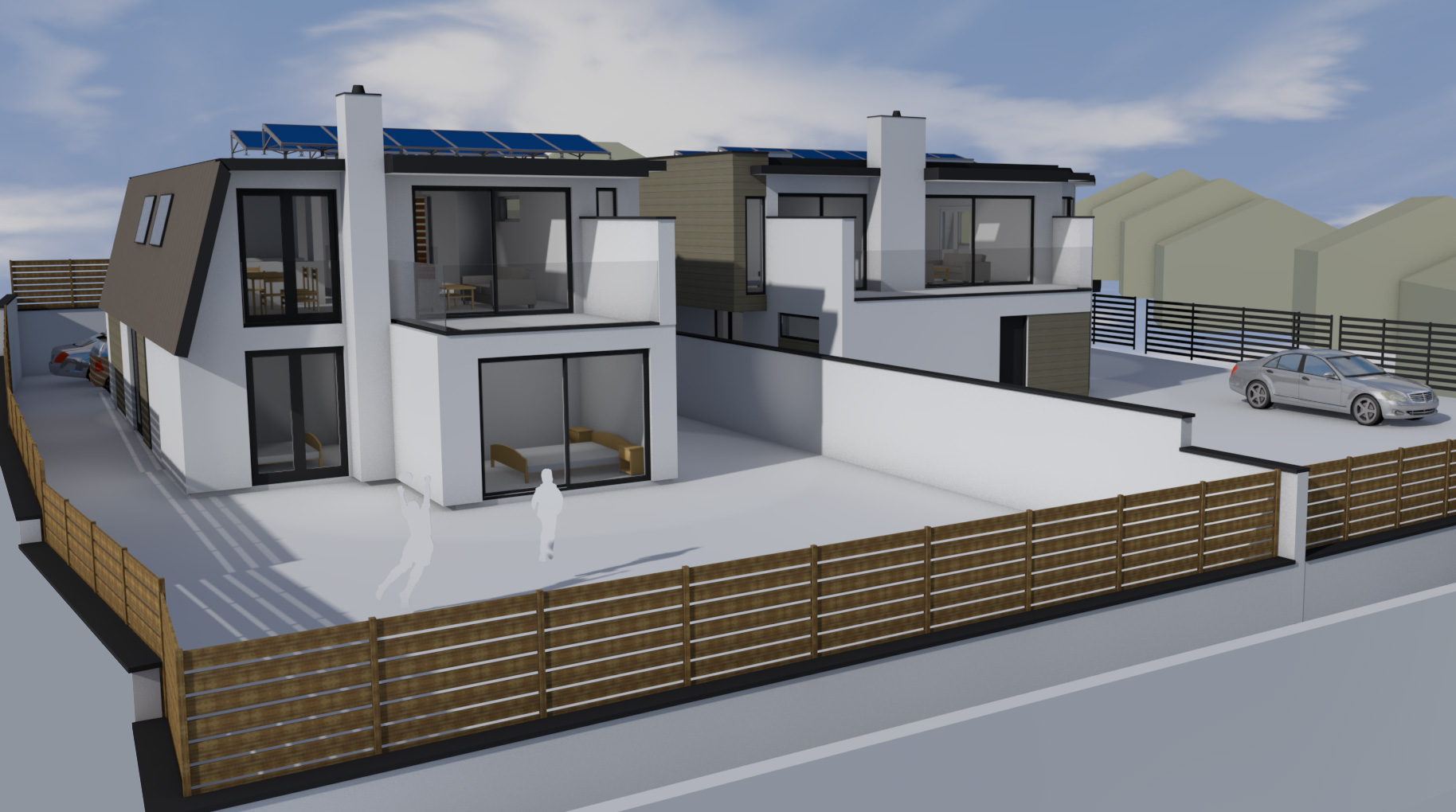
From our initial discussions with the clients, they had a very clear idea of what they wanted to achieve and sent over lots of images. We then created 3D models of the two houses and outputted them to iPads and smartphones so the clients and planners could ‘walk round the plans’ to get a feel for the size, scale and layout.
Regarding material palette, the local vernacular features a mix of rendered buildings with tiled roofs, and we tried to take cues from the local materials and use these in a modern context. Our final design consists of materials such as render, metal cladding and slate-coloured roofing (timber frame is the chosen method of construction).
In order to make the most of the views of the bay, the houses feature an upside-down layout with open plan kitchen/living/dining space on the first floor.
The clients were also keen to reduce their energy bills and so the two homes will be built to meet Passivhaus requirements and benefit from a mechanical ventilation heat recovery unit and triple glazing.
ALLAN’S COMMENT:
We find that utilising our 3D drawing package (ARCHICAD) to show clients (and planners) how the house will look on the site, gives a more accurate understanding of how the proposals will finally look. We can take it a step further and show how the sun path will move across the site, this can be a really useful tool to see if we are going to overshadow a neighbouring property!
Giving the planners as detailed a submission as possible always helps with the decision process, a set of 2D drawings cannot convey as much detail or context as a rendered image. We always show the proposed house superimposed into the streetscape – this helps planners and neighbours see the impact of the proposed design.
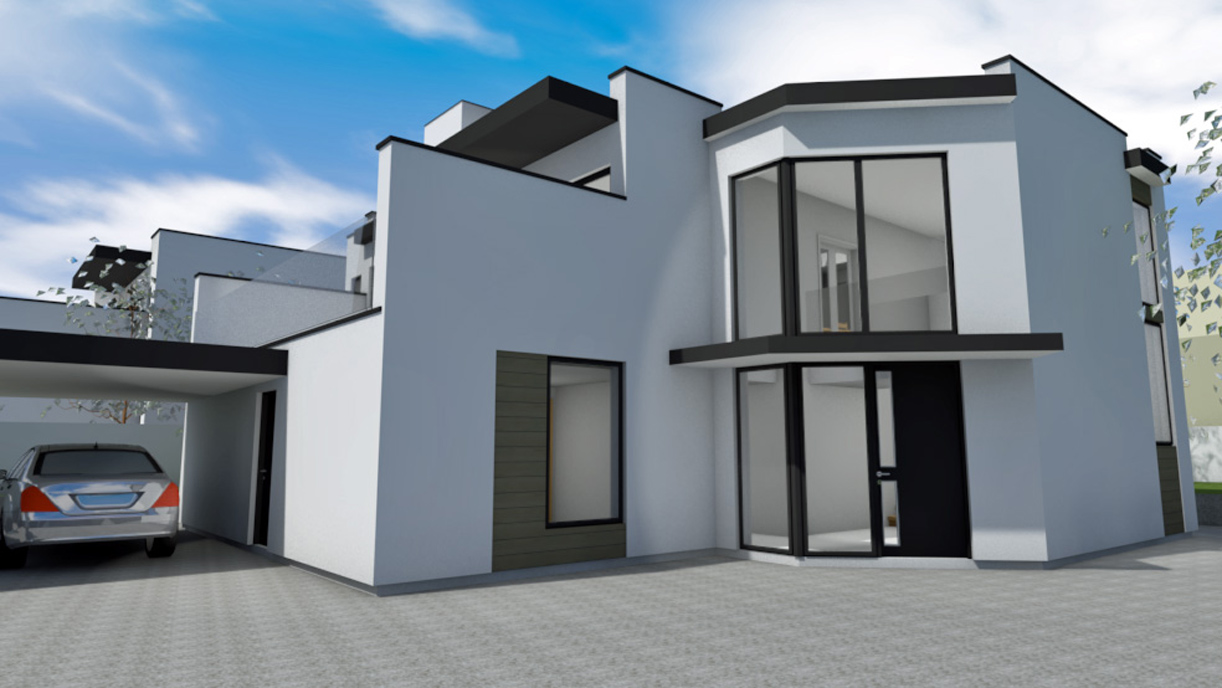
WORKING WITH THE PLANNERS
We engaged the planners from the outset and had multiple meetings to get the proposed dwellings to a scale and size that the planning department and clients were both comfortable with. We were very fortunate to have dealt with such a proactive council and planning department who strongly support self-build.
However, we did have to tweak the design slightly to reduce overlooking and protect the neighbours’ privacy. One solution was the introduction of external louvres over the windows, so that there is no clear sightline into the neighbouring properties.
ALLAN’S COMMENT:
I can not stress highly enough how important it is to speak to the planners prior to the formal submission. Having the planners involved, feeling like part of the design team will ultimately make the formal approval process smoother and quicker.
The normal planning approval process should take around 8 weeks if there is no contentious element to the proposals. However, if there are issues and it goes to committee then you can potentially add another 8 weeks to the process.
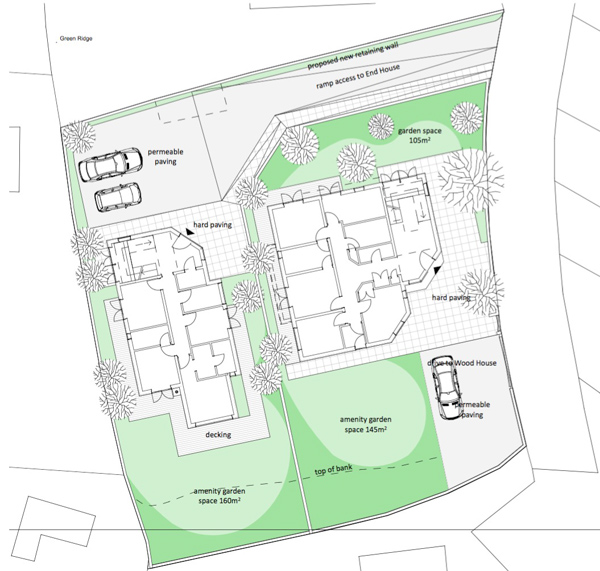
PLANNING COMMITTEE HEARING
Despite the planning team recommending the scheme for planning approval, one councillor was not in favour of the proposals and took it to committee stage. At the first committee hearing, it was agreed that a site visit had to be carried out and the documents reviewed again to help the councillor understand what we were trying to achieve.
At the second committee hearing, I gave a presentation to argue the case. Here, I explained that the revisions met all necessary requirements and that the two proposed dwellings resulted in a smaller footprint than the original single dwelling that had received outline planning approval. I also noted that the council’s planning team were in full support of the project.
ALLAN’S COMMENT:
Submitting a detailed Design & Access Statement (DAS) along with the planning application is vital (especially in England), this supporting document outlines all of the main areas of the proposal. From site analysis, planning policy to design ethos, this detailed document should include photos and rendered images. It is a clear document that supports the main drawings and should allow any interested party to review the submission in one document.
This document was vital in the committee review meetings, as all of the councillors could easily understand what we were planning and how little the impact would be on the area.
In terms of advice, I would strongly suggest getting initial advice from planners before purchasing site, as this can really help you understand what can be achieved, as well as opening up a dialogue where you can make an argument for the project that they would able to support.
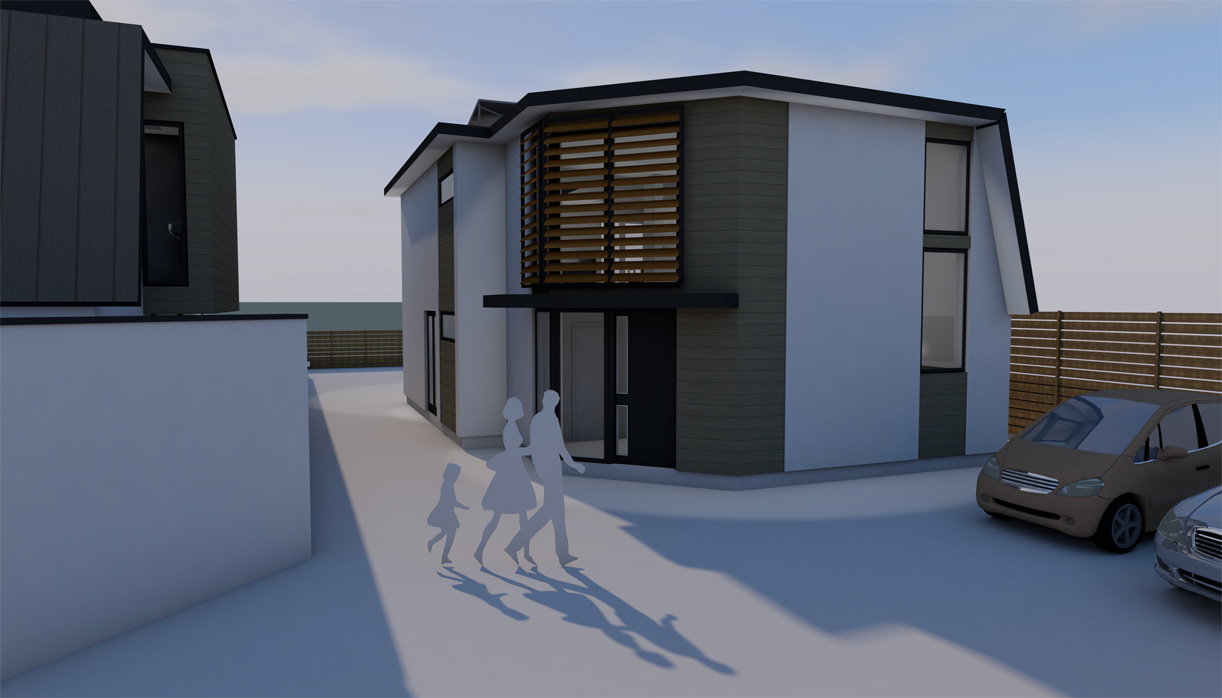
ALLAN’S TOP 6 TIPS FOR PLANNING APPROVAL:
- Hold pre-application discussions with the planners from the outset, ideally before you commit to purchasing the plot.
- Appoint the right professionals – someone who knows the planning system and can visualise your dream home.
- Make sure you have room to manoeuvre without compromising the design.
- Open a dialogue up with your neighbours from the outset, make them aware of your plans and that you will listen to any concerns.
- Ask your neighbours to support your application – remember they can put in a formal objection, but they also support the application.
- Finally taking points 1 to 5 into consideration….remember it’s your dream home, not the planners, not your neighbours and definitely not your architects!
If you would like to read more about the project, have a look at our Portfolio.
If you have any questions for Allan and the rest of the team, send your suggestions to us via email (marketing@www.acarchitects.biz), or social media using #asktheselfbuildexperts.

